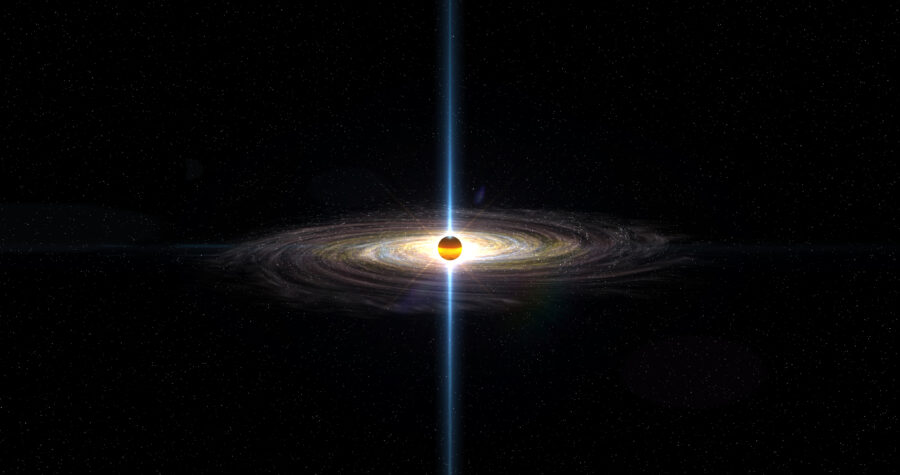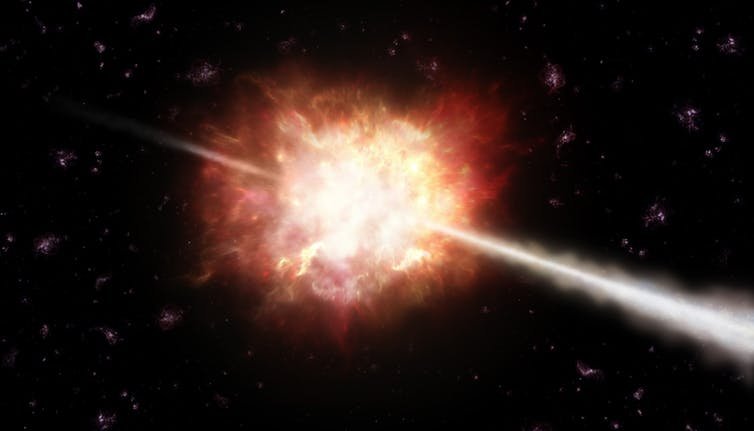Astronomers liken gamma-ray bursts to lighthouse beams

Fred Watson
Fred Watson

To understand why, we have to go back to 1967, when the first of a class of astronomical events known as gamma-ray bursts, or GRBs, was observed. Discovered serendipitously by satellites designed to detect gamma-ray flashes from illegal nuclear tests, the bursts were soon identified as coming from space. Moreover, when new spacecraft were introduced in the 1990s, they were found to originate deep in the universe, well beyond the confines of our Milky Way galaxy.
As their name suggests, GRBs are short-lived, lasting anything from a few milliseconds to several minutes. Often they are followed by a visible-light afterglow, allowing optical telescopes to make detailed measurements. We know that most of them occur in galaxies billions of light-years away and that the brief burst of radiation each one releases is comparable with the Sun’s output during its whole lifetime.
But what causes this staggering brilliance?
We believe it’s the aftermath of a giant stellar explosion – a supernova – that creates a black hole spraying intense beams of particles and radiation from its poles. What we see as a GRB is our view directly into the beam. The bursts can be analysed to show how the gamma-ray intensity rises to a peak, then falls again.
Strangely, the details of the intensity profile are often quite symmetrical – the fall-off in intensity is a perfect mirror-image of the rise – hence the idea of time being reversed in the fall-off. But the American team has arrived at a far more likely explanation of what is going on. Imagine the beam of gamma-rays to be the light from a distant lighthouse. Its beam might be dimmer at the edges than the centre but it will be symmetrical in cross-section.
Now imagine that beam scanning across your vantage point as the lighthouse rotates. What will you see? It will be a rise in intensity, followed by a fall-off that will be a mirror-image of the rise due to the symmetry of the lighthouse beam.
This simple logic has led the astronomers to conclude that in many GRBs the intense beam of gamma radiation is moving laterally so it sweeps over our view from planet Earth – just like a lighthouse beam.



